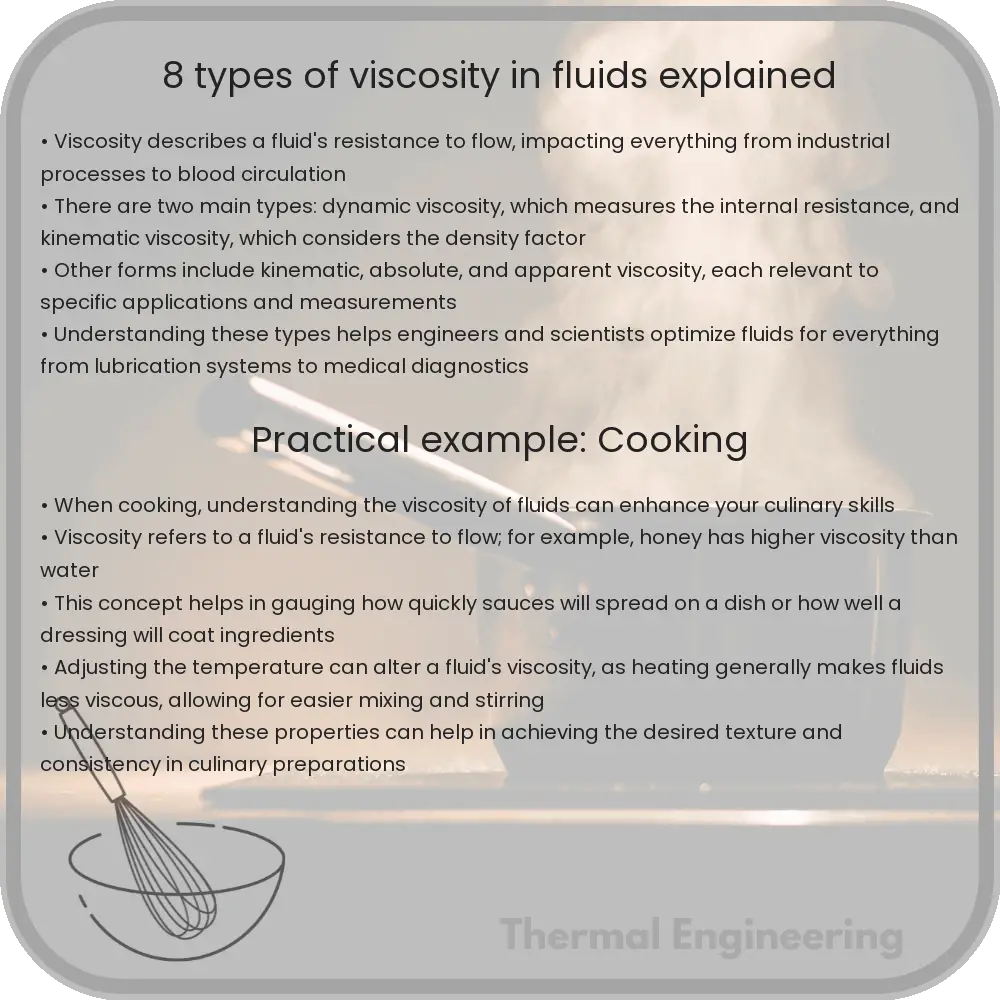Learn about the various types of viscosity measurements crucial for understanding fluid behavior in engineering and science.

Understanding the Types of Viscosity in Fluids
Viscosity is a fundamental property of fluids which describes their internal resistance to flow. In simple terms, it’s a measure of how “thick” or sticky a fluid is. Viscosity is a crucial factor in areas such as engineering, meteorology, and even in everyday products like oils and paints. There are several ways to classify and understand viscosity, and here we will explore eight types of viscosity measurements and concepts important in fluid dynamics and various applications.
Different Types of Viscosity
1. Dynamic (Absolute) Viscosity
The dynamic viscosity of a fluid is a measure of its resistance to gradual deformation by shear stress or tensile stress. For liquids, it corresponds to the informal notion of “thickness. For example, honey has a higher dynamic viscosity than water. It’s typically measured in pascal-seconds (Pa·s) in the International System of Units (SI).
2. Kinematic Viscosity
Kinematic viscosity is the ratio of dynamic viscosity to fluid density. It describes the fluid’s internal resistance to flow under gravity. Kinematic viscosity is often used in the study of fluid dynamics and is measured in units of m²/s. It’s particularly useful when analyzing the Reynolds number, which helps predict flow patterns in different fluid flow situations.
3. Absolute Viscosity
Absolute viscosity (another term for dynamic viscosity) refers to the force required to move one layer of fluid in relation to another layer. The common unit used to express absolute viscosity is the poise (P), which is more traditional but still widely used in various fields, including engineering.
4. Apparent Viscosity
Apparent viscosity is used in non-Newtonian fluids where viscosity changes with the rate of shear strain. This type of viscosity is calculated at a specific shear rate and can vary depending on conditions, such as in fluids like ketchup or whipped cream, which behave differently under stress.
5. Rotational Viscosity
Rotational viscosity is measured using rotational viscometers where the fluid is sheared within a cylindrical or cup-like apparatus. This method can be useful for characterizing viscosity in paints, coatings, and other materials that are affected by rotational forces.
6. Shear Viscosity
Shear viscosity refers to the viscosity measured when the fluid is subjected to shear flow, caused due to parallel plates moving at different velocities. This measurement is crucial in engineering applications such as lubrication and aerodynamics.
7. Extensional Viscosity
Extensional viscosity is a measure of a fluid’s resistance to lengthening in an extensional flow. Unlike shear flow, extensional flows involve changes in fluid body shape without any rotation. It’s particularly informative in processes like fiber spinning, jet fuel injection, and inkjet printing.
8. Viscosity Index
The Viscosity Index (VI) is an empirical dimensionless number that indicates how much a fluid’s viscosity changes with temperature. A higher VI means the viscosity changes less with temperature variations, which is important for motor oils and hydraulic fluids that must perform across a range of temperatures.
Conclusion
Viscosity is a versatile and vital concept in both natural and industrial processes. Understanding the different types of viscosity helps engineers, scientists, and even everyday consumers make informed decisions about materials and fluids in their specific contexts. By applying these concepts, one can better understand how fluids will behave under different conditions, leading to more efficient and effective designs and applications.